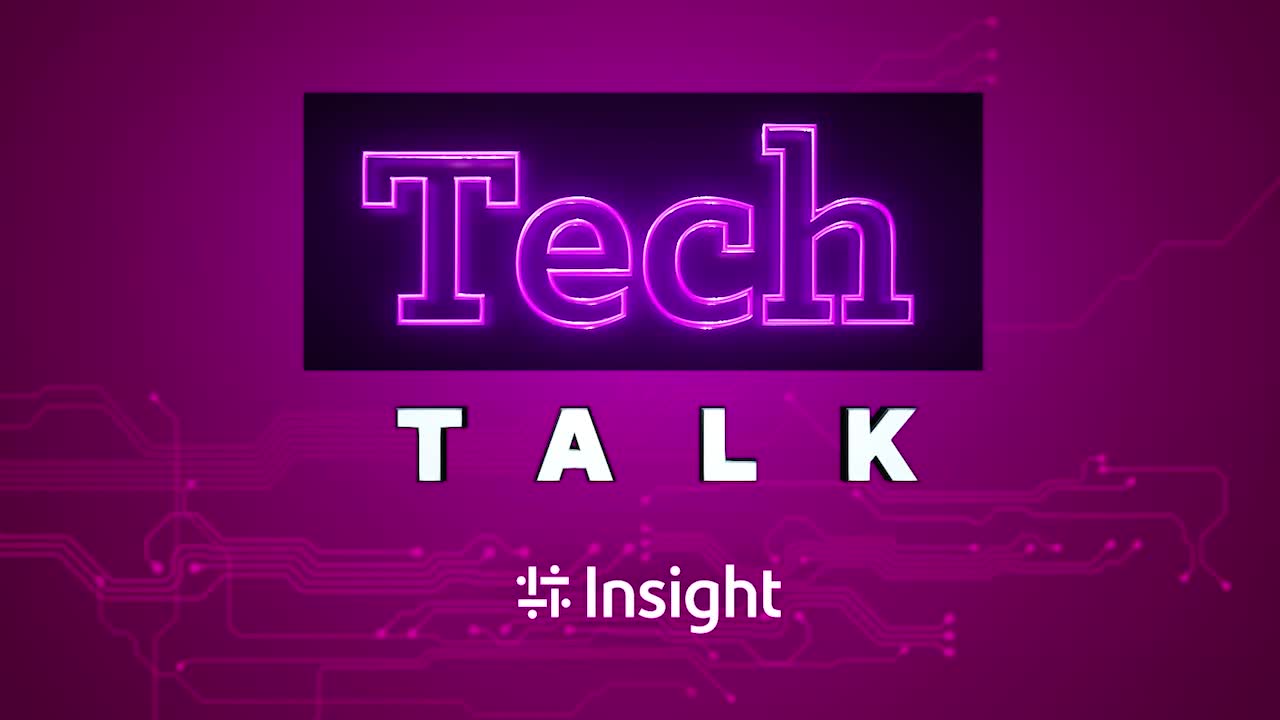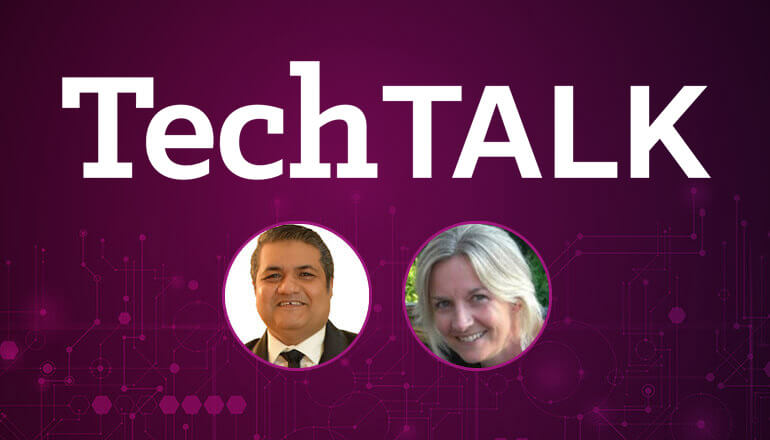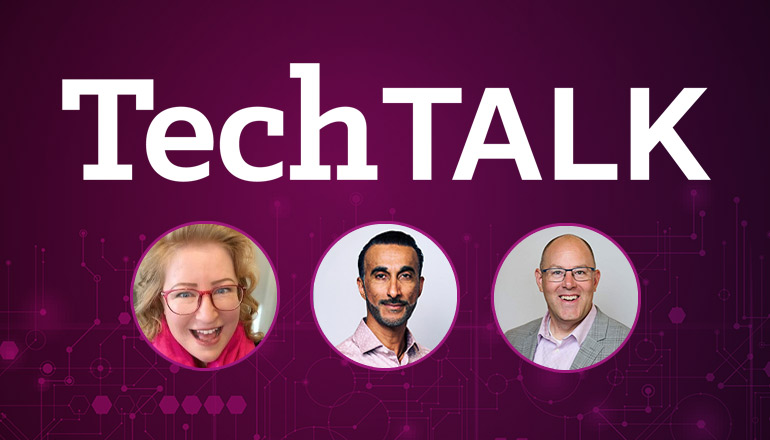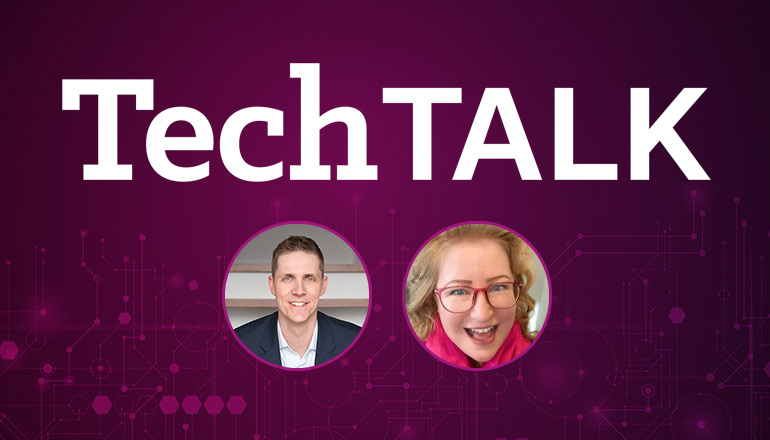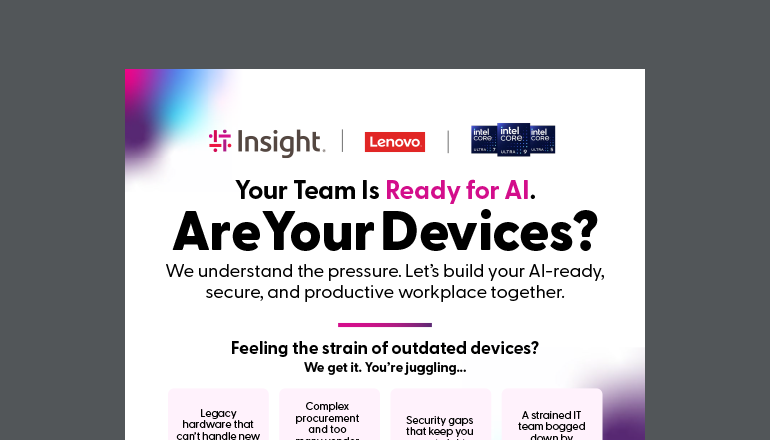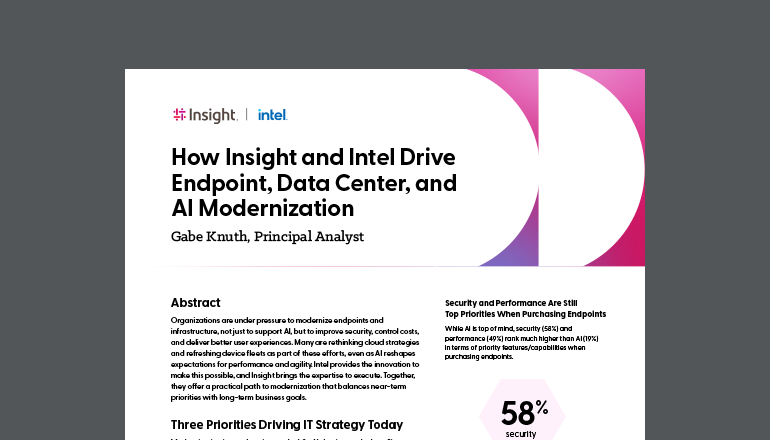SHAWN
Hello, and welcome to Insight's Tech Talk. I'm Shawn Ambrose, and I lead our Field Sales Business for Insight Canada. I'm joined today with Kiran Talreja and Arunan Nadarajah, who are going to speak to us about this thing called data. Kiran is an Applications Consultant in our digital innovation solution area, and Arunan is Solution Architect in our Cloud and Data Center transformation solution area. We're going to dive a little deeper into what exactly is data. Why is it so relevant and where does it live? Kiran, let's start with you. Can you help our audience understand a little more of, what is this thing called data?
KIRAN
Thank you, Shawn. Thank you for introducing me. Well data. Data is everywhere. It is a collection of facts. It has become such a common word that many of us would have probably never thought about its exact definition. In computing, data is information that has been translated into a form, that is efficient for movement or processing. Relative to today's computers and transmission media, data is information converted into binary digital form. Well, that is what the technical definition entails, but what first pops up in our mind about data is most likely a spreadsheet, a table, or a chart that comprises of numbers and labels. Data can be collected in diverse ways, and stored in various formats and the optimal way depends on its usefulness and its efficiency.
SHAWN
That's great, thanks Kiran. Now that we've learned a little bit more about what data is, can you help us understand why is it so important, and why should people focus on becoming data literate?
KIRAN
Well, I will definitely value data as really important. Data will help you to improve quality of life for people you support. Improving quality is first and foremost among the reasons, why organization should be using data. Data is knowledge. Good data can help you make informed decisions, like knowing what data is appropriate to use for a particular purpose. Interpreting data visualizations such as graphs and charts, thinking critically about information yielded by data analysis. The data about data is what we call metadata today, and our ability to read, understand, create, and communicate about the data is data literacy. Without data, how do you know who your customers are? Without data, how do you know if your consumers like the products or if your marketing efforts are effective? Without data, how do you know, how much money you are going to make or spend? Data is understanding your customers and your market.
SHAWN
Wow, thanks Kiran. So data really is everywhere, and coming at us from all sorts of different sources that have impacts in different parts of our business and help us think and react and make decisions in different ways. So if that's data, what is big data?
KIRAN
Big data. Well, the term big data refers to data that is so large, fast or complex, that it's difficult or impossible to process using traditional method methods. It grows exponentially with time. Some examples of big data are like, New York stock exchange generates about one terabyte of new data per day. Social media sites like Facebook ingests 500 plus terabytes of new data every day. This data is mainly generated in terms of photo and video uploads, text messages, putting comments or likes, etcetera. Now, how do we distinguish? How do we know which data is big data, right? So data is described by three main characteristics. Volume, velocity and variety. Well, volume is the size of data. Velocity, the speed at which the data is coming in. Variety, will be the different types of data that gets ingested.
SHAWN
Right. Well, thanks Kiran, that's great. And kind of back to the the business and the value side of it here. When we think about big data, what's the business value of that, and how does that create opportunities for businesses these days?
KIRAN
That is the perfect question. So, I mean, data allows organizations to more effectively determine the cause of problems, right? We're trying to solve a problem. It allows organizations to visualize relationship between what is happening in different locations, departments and systems. If, for example, in a pharmacy, the number of medication errors has gone up. Is there an issue such as staff turnover or vacancy rates? That may suggest a cause. I mean, looking at these data points side by side allows us to develop more accurate theories, and put into place more effective solutions. Data increases efficiency. That's our main aim. Effective data collection and analysis will allow you to direct scarce resources where they're most needed. I mean, if an increase in significant incidents is noted in a particular service area, this data can be dissected further to determine whether the increase is widespread or isolated to a particular site. If the issue is isolated, training, staffing or other resources can be deployed precisely where they're needed, as opposed to system-wide. I mean, with good data, you can be confident that you developed your approach based, not upon guesses, but good solid data.
SHAWN
So it seems to me that the data is everywhere. There's big data, and there's just an abundance of data out there, that's growing in our market, and helping us in our day-to-day business. When I think about that, and the volume of data that must be there, maybe Arunan, we'll invite you into the conversation, where the heck does all this data live? (Arunan laughs softly) Maybe you can help us understand that part a little bit.
ARUNAN
Absolutely. So storage is where this data lives.
SHAWN
Right
ARUNAN
Yeah, think about it. There's a one-to-one relationship between data and storage. Every byte of data needs a home. Sometimes more than one place, if you have to have a copy of it. And also not all data is created equal. For example, you take a database, there are user files, and they are two different formats and needs. Analytical data versus archival data, production data vs backup data. So the type of storage you pick and there are many, must match the demands of the data. So, even selection of the data matters, because the data that sits on it matters.
SHAWN
So different places to put the data, different ways to approach it. One thematic thing that I think we all hear in the marketplace is cloud, and then on-premise, and kind of different ways to think about data storage and data management there. Can you help our audience understand that a little bit through your lens as a Solution Architect?
ARUNAN
Right. So at Insight, we have this concept of centers of data. It's kind of play on that terms of data centers. We call it centers of data. Just to emphasize the fact that the placement of the data and the corresponding storage needs to sit in a place where it's most useful. It could very well be on premise. It could be in the cloud, or on the edge, like in a mining site, or a mix of all of this. The location of the data, and the storage is determined after figuring out where the data is most needed, and that is where we put the storage, and build computer networking and security around it.
SHAWN
Right? So, ultimately we're looking at, as you say, where's the storage most needed, and accessibility and speed and efficiency. How would one manage all this, 'cause it sounds like then we might have storage in different places, and by design, how does an operator manage all that to make it efficient?
ARUNAN
There's a term for this called Data Lifecycle Management. It's a kind of a fancy word for moving data around. Where you put your data today will not not be the best place for it tomorrow, or next week, or next month, or next year. The advancements in storage technologies like automation, auto-tiering can do this by moving and managing this data based on set policies. Now, this helps us as architects at Insight, design solutions to meet customer needs, and the customers enjoy all of these advanced functionalities to simplify their IT operations. This is why storage plays a critical part in transformation.
SHAWN
Thanks, Arunan. That's really, really interesting. Kiran, thank you for helping us understand more about data. What is data, what is big data, what's the business business relevancy. Arunan what a great explanation of, where should the data live, and how to approach that and how to think about managing it. Boy, this is a really big topic, and we could extend this Tech Talk for another other 10 minutes or so. But rather than that, why don't we have a part two to this? So thank you to our audience for tuning in, and what we'll do is we'll set up a part two, where we're going to dive deeper into that storage conversation and actually then start to mesh that storage conversation with how do we then secure the data. So thank you to our audience for tuning in today for our Tech Talk, and we're excited to bring part two to you very soon. Have a great day, everyone. Thank you.
KIRAN
Thank you.
ARUNAN
Thank you.

